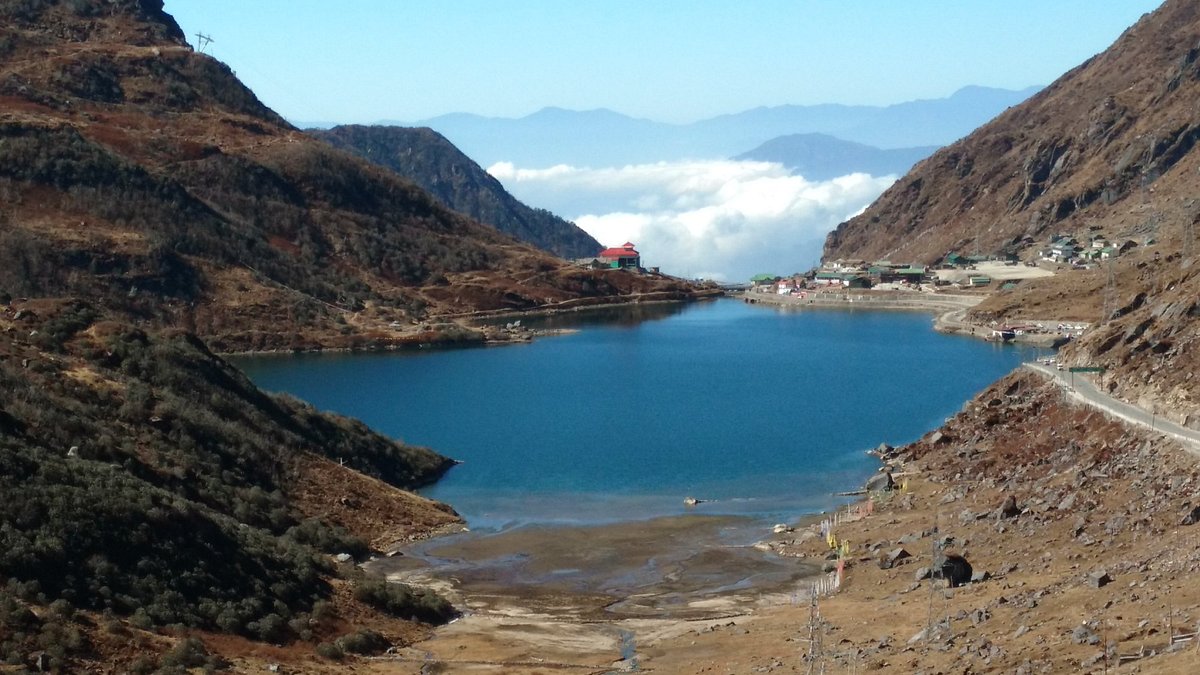Changu Lake, also known as Tsongmo Lake, is a breathtaking glacial lake situated in the eastern part of Sikkim, India. Nestled at an altitude of approximately 12,400 feet, this enchanting body of water is surrounded by towering mountains and is a significant attraction for tourists and pilgrims alike. With its stunning natural beauty, rich cultural heritage, and serene ambiance, Changu Lake offers a unique experience for visitors.
The Journey to Changu Lake
Reaching Changu Lake is an adventure that begins from Gangtok, the capital of Sikkim. The journey is approximately 40 kilometers and takes around two hours by road. The route offers stunning views of the lush valleys and majestic peaks of the Himalayas. As you ascend, the landscape transforms, revealing a picturesque panorama that prepares you for the beauty of the lake itself.
Travelers often embark on this journey in shared taxis or organized tours, as the road can be narrow and winding. It is essential to obtain the necessary permits to visit Changu Lake, as it is located near the Indo-China border. These permits can be arranged through local travel agencies, making the process relatively hassle-free.
The Beauty of Changu Lake
Changu Lake is renowned for its serene and tranquil environment. The lake is oval-shaped and spans approximately one kilometer in length, with crystal-clear waters that reflect the stunning mountain scenery surrounding it. The colors of the lake shift with the seasons, ranging from deep blue in summer to a brilliant green in autumn. In winter, the lake may freeze, creating a surreal and magical landscape that draws photographers and nature enthusiasts.
The pristine beauty of Changu Lake is enhanced by its unique location amidst a rugged landscape. The surrounding mountains are often covered in snow, and the area is adorned with vibrant rhododendron and alpine flowers, especially during the spring months. This creates a breathtaking contrast against the azure waters of the lake.
Cultural Significance
Changu Lake holds immense cultural significance for the local people. It is considered sacred by both Buddhists and Hindus. According to local beliefs, the lake is home to the guardian deity, and rituals and prayers are performed to seek blessings. The nearby Tsongmo Monastery adds to the spiritual ambiance of the area, attracting pilgrims who come to pay their respects and offer prayers.
The lake is also associated with various legends, including tales of its mystical powers. Local folklore speaks of the lake providing life-giving blessings to those who visit, making it a revered site for many.
Flora and Fauna
The region around Changu Lake is rich in biodiversity, offering a glimpse into the unique ecosystems of the Himalayas. The landscape is characterized by alpine meadows, rocky terrain, and a variety of plant species that thrive in the harsh climatic conditions. In spring, the area comes alive with blooming rhododendrons and other wildflowers, adding splashes of color to the scenery.
Wildlife enthusiasts may spot a variety of species in the vicinity, including the Himalayan black bear, red panda, and various bird species. The high-altitude environment creates a unique habitat for these animals, although sightings can be rare due to the elusive nature of many species.
Best Time to Visit
The best time to visit Changu Lake is during the spring and summer months, from March to June. During this period, the weather is relatively mild, and the area is adorned with blooming flowers. The clear skies provide excellent visibility, allowing visitors to fully appreciate the stunning views.
Autumn, particularly from September to November, is also a great time to visit. The temperatures are cooler, and the changing foliage offers a picturesque backdrop. Winter months, from December to February, can be enchanting, with the possibility of snow, but visitors should be prepared for extremely cold temperatures and potential road closures due to snow.
Travel Tips
- Acclimatization: Due to the high altitude, it's essential to acclimatize before visiting Changu Lake. Spend a day in Gangtok to help your body adjust to the thinner air.
- Permits: Ensure you have the necessary permits to visit Changu Lake. These can be obtained through local travel agencies or tour operators.
- Dress Appropriately: The weather can be unpredictable, so wearing layers is crucial. Carry warm clothing, even in summer, as temperatures can drop significantly.
- Stay Hydrated: At high altitudes, dehydration can occur quickly. Drink plenty of water and consider carrying hydration packs.
- Respect the Environment: Changu Lake is a fragile ecosystem. Visitors should follow responsible tourism practices, including leaving no trace and respecting local customs and traditions.
Nearby Attractions
Changu Lake is often combined with visits to other attractions in the region. One popular nearby destination is Nathula Pass, located about 20 kilometers away. This high-altitude pass connects India with Tibet and offers stunning views of the surrounding mountains. Visitors can explore the historical significance of the pass and enjoy the breathtaking landscapes.
Another nearby attraction is Baba Mandir, dedicated to the memory of an Indian soldier, Baba Harbhajan Singh. The shrine has become a popular pilgrimage site, and many visitors include it in their itinerary after visiting Changu Lake.
Conclusion
Changu Lake is not just a visual delight; it is a destination steeped in cultural and spiritual significance. Its breathtaking landscapes, rich biodiversity, and serene ambiance make it a must-visit for anyone traveling to Sikkim. Whether you are an adventure seeker, a nature lover, or someone looking for spiritual solace, Changu Lake promises an unforgettable experience.
As you stand by the shores of this beautiful lake, surrounded by the grandeur of the Himalayas, you'll find a sense of peace and connection to nature that lingers long after your visit. Changu Lake is truly one of Sikkim's hidden gems, inviting you to explore its beauty and embrace the tranquility it offers.





Comments